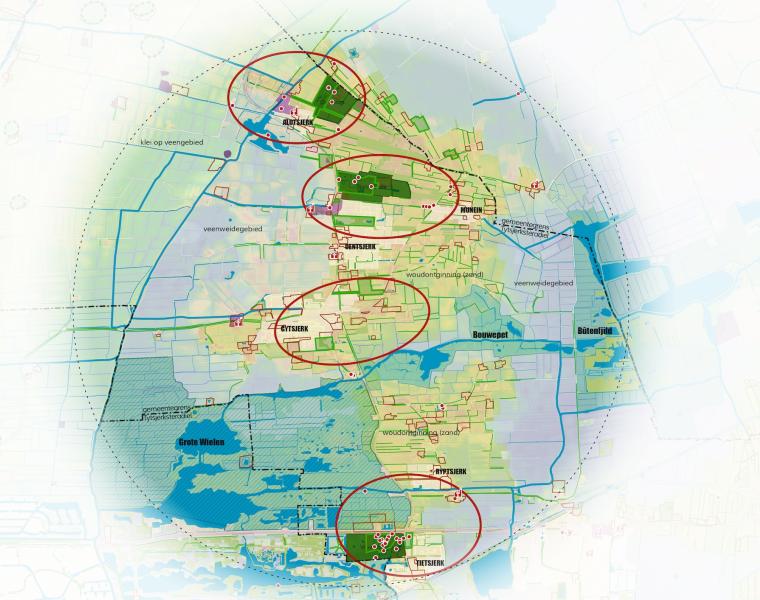Park landscapes: towards a synergy between culture and nature heritage ensembles and the hospitality sector in Friesland
The Frisian built and green heritage are under great pressure, while they are an important part of the environmental quality of places and contribute to the meaning of a destination for residents, visitors, and companies. Heritage contributes directly to an attractive and hospitable region and is the guest of (economic) value for heritage locations. From the heritage sector there is a need for a future perspective that is aimed at preserving the social value of heritage as well as the value of heritage for the hospitality sector. To use Frisian cultural and natural heritage as a foundation for smart growth and broad prosperity, the Fries Heritage Collective wants to develop an area perspective for the Trynwâlden Park Landscape. This area is rich in cultural and natural heritage and serves as an example project for other park landscapes with high cultural and natural values.
Goal
For the 'Hospitable' part of the total area plan 'Green and Hospitable Park Landscape Trynwâlden', the municipality of Tytsjerksteradiel has commissioned the Fries Heritage Collective to connect the country estates in this area with the landscape parks (De Klinze, Stania State, Heemstra State and Vijversburg) and to make the immediately surrounding natural and agricultural landscape more pleasant to experience.
CELTH has been asked to take on a subproject within this: 'strengthening the meaningful destination for visitors, residents and companies.' The central question facing the CELTH researchers is 'what is needed in the field of organisational capacity and product development to increase the synergy between heritage locations on the one hand and the hospitality sector on the other'. Goals of this subproject are:
- Strengthening synergy between heritage (locations) and the hospitality sector in Friesland by stimulating regenerative tourism and a circular hospitality economy.
- Make Trynwâlden Park Landscape a more meaningful destination, and use this project as an example for other destinations in Friesland.
- Make heritage more accessible, resilient and valuable for (younger) target groups.
- Developing and strengthening a 'partner ecosystem' following the example of the National Trust in England
Approach
The research consists of five parts that are usually carried out simultaneously. In the first part, a destination study is carried out. A SWOT analysis provides a picture of the collaborative/organising capacity of parties in the region. The second part includes a resident survey that determines which success factors and bottlenecks residents experience when it comes to hospitality. Another important part is the visitor survey, which looks at the planned visitor experience, the expected visitor experience and the experience. On this basis, the most important touchpoints in the area are identified as well as problem points. Part four of the research examines companies and what the hospitality and heritage sectors bring to the region and how the hospitality sector can contribute to the conservation of heritage locations. In the final phase of the research, a development plan is drawn up to strengthen the synergy between heritage locations and the hospitality sector.
Partners
- Frisian Heritage Collective
- Municipality of Tytsjerksteradiel
- NHL Stenden University of Applied Sciences
- European Tourism Futures Institute
- Breda University of Applied Sciences
Project team
- Sarike van Slooten (NHL Stenden)
- Moniek Hover (BUas)
- Wesley Put - van den Beemt (BUas)
- Nanda Slangen (BUas)
- Els van der Laan (Fries Erfgoed Collectief)
Planning
January 2025 – December 2025
Status
Ongoing



